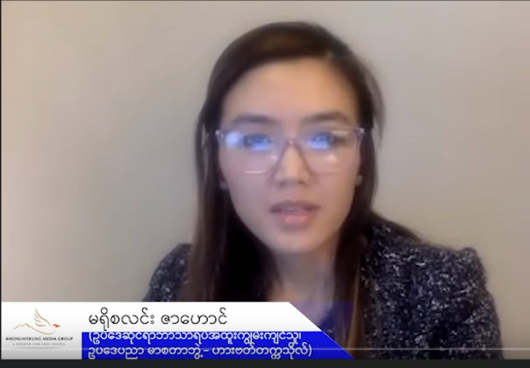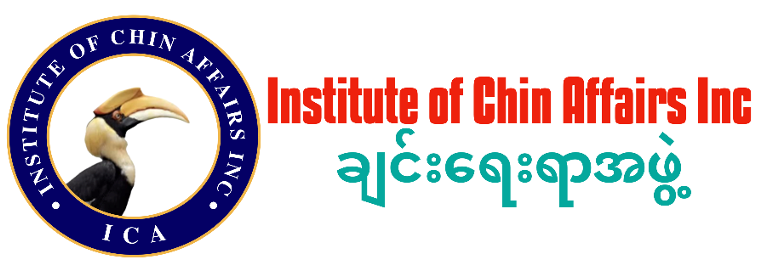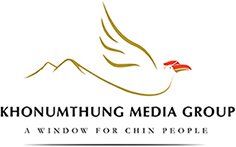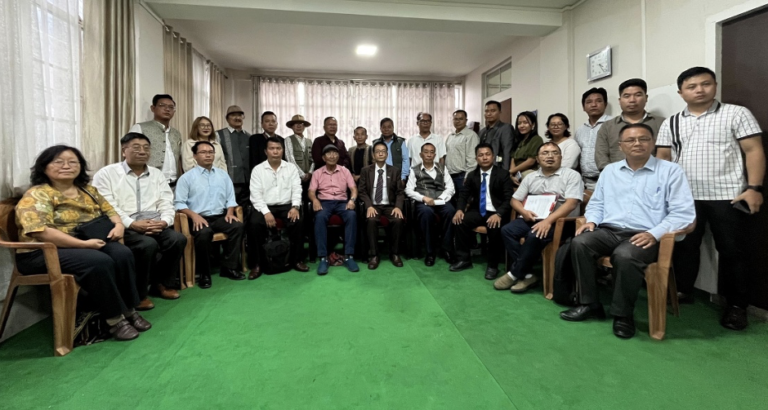On 21 September, the Zo Reunification Organization (ZORO), a civil society organization from the Indian state of Mizoram, facilitated the first-ever plenary meeting between the Chinland Government/Chin National Front (CNF) and the Interim Chin National Consultative Council (ICNCC)/Chin Brotherhood (CB) in Aizawl, Mizoram State.
At this meeting, both parties agreed not to use armed means to resolve any disagreements between the two sides. Five initial agreements were also reached, including the need for further meetings between leaders of both organizations, which are necessary for the success of the peace process.
In Chin State, where the resistance is strong, political differences have emerged between the Chin resistance forces after more than three years of revolution. This has divided them into two factions: those who support the Chinland Council (CC) and those who support the ICNCC.
During the battle for Matupi town, there was even an exchange of fire between members of the CC and the CB, resulting in casualties on both sides. In the midst of these political disagreements that led to fighting between Chin forces, ZORO has acted as a peace mediator.
ZORO is an organization working for the reunification of the Chin-Kuki-Mizo (Lushai) tribes, who were scattered across India, Myanmar and Bangladesh due to British colonial rule, to bring them under a single administration.
The organization seeks to restore unity in the face of political disagreements among the Chin brothers. It has previously met separately with the Chinland Government/CNF government and the ICNCC/CB and has now taken the lead in organizing this plenary meeting.
In this vox pop, Khonumthung Media Group (KMG) has compiled the views of some Chin civil society organizations and experts monitoring the political and military situation in Chin State on these developments, how efforts to reunite the Chin resistance forces under the leadership of ZORO could progress, and what steps are needed to reunite the Chin resistance forces.
Ma Rosalinn Zahau – Human Rights Activist, Constitutional Law Expert

For the first question, we have CC and CNF on one side, and ICNCC and CB on the other. Looking at the five points they have agreed upon after meeting, it’s a welcome step that they have moved from a state of division and conflict to meeting and reaching agreements. I think everyone would be happy about this. But, it would be better if there had been thorough discussions within CC or within ICNCC/CB, and they came to this meeting with full agreement from all sides. If the leadership of CC and CNF came after comprehensive discussions with all groups within CC, with a clear mandate on what they could discuss, that would be ideal.
If instead, only the top leadership of CC and CNF discussed and came to this meeting, releasing these five points of agreement without broader consultation, it’s concerning. Similarly, the ICNCC/CB side should have had thorough discussions and consensus among all their member groups before the meeting. If the participants in this meeting were just those who happened to be around Aizawl and logistically able to attend, and they hurriedly met and brought points to discuss, then reached these five points of agreement under the pressure of being in front of ZORO and others, we should be even more cautious about these five points.
The reason is that these problems and divisions arose because of political and military steps taken without thorough internal discussions. To avoid repeating such steps, it’s better to have comprehensive discussions with all stakeholders before participating in such joint meetings and making agreements. Looking at the current situation, since there has been bloodshed between the groups, returning from this state and reunifying is now far off. The Chinland Council might need to be ready to set aside their written constitution and concept of government. Similarly, the other side might need to be flexible about whether they proceed under the name ICNCC or Chin Brotherhood.
If we should leave the name, we’ll leave it. If it’s necessary to disregard the already written documents, we’re ready to disregard them. I think it will work out the day when we can meet with a truly open mind, without any preconditions.
Connecting this to the earlier point, for open processes to emerge, I think it’s necessary to first gather all stakeholders from within the existing groups, have thorough discussions, and establish common ground and common positions. Only after in-depth internal discussions can we start an open process for meeting with the other side. I believe we can only turn this situation around if we start from the beginning with this approach. Whether a truly open process can be restarted depends on all the involved stakeholders.
Edward Andrew – Spokesperson (Chin Civic Movement – CCM)

Reading this news makes me feel encouraged. As the Chin Civic Movement – CCM, we have been constantly urging for this kind of meeting to happen. So, seeing this arrangement, we are grateful to the ZORO. We also thank the Mizoram government.
Looking at these five points, there are two aspects to discuss. Firstly, we don’t see any mention of how to address or prevent future incidents, or how to keep the groups temporarily apart if something happens after this agreement.
Secondly, point number 5 seems to be an action point. But, we don’t yet see any specifics about when and how they will meet again. Perhaps I’m being too optimistic or hasty in my expectations.
My suggestion would be for both groups to take this meeting seriously, value it, and continue to carry it forward and implement it.
Salai Dokhar – Founder of India for Myanmar

I’m happy about this meeting. At the same time, I’m concerned because not all peace talks are successful. We need to approach these negotiations among Chin groups systematically to ensure success. From my experience, the reason our discussions within the Chin community often fail is due to weaknesses in our approach to finding solutions for Chin issues. Now that this negotiation has emerged and seems to be more systematic, it’s crucial that we don’t make mistakes in our approach. If we take a wrong approach, Chin State will continue to suffer. So while I welcome this development, I urge everyone to proceed with the right approach.
At the moment, we’re certain that town capture operations have begun. By the end of 2025, even if not 100 percent, resistance forces might control about 90 percent of the area. So, when we’re looking for solutions to Chin issues, I suggest we think several steps ahead at once. This is because the current approach is based on a revolutionary period structure, so when we negotiate based on the interests of various organizations, it becomes very difficult to make compromises.
So, if we skip this stage and discuss under the heading of a transitional constitution, the current ICNCC side wouldn’t need to abandon their parent organization, and the CC (Chinland Council) wouldn’t need to dissolve their organization either. If this group can draft a transitional constitution which is applicable within Chin State in advance, with a final deadline around 2025, I believe it will make it easier to find a solution.
Salai Van Sui San – Assistant Director / Institute of Chin Affairs (ICA)

I view the five points of consensus that came out of the discussion as an initial step towards rebuilding Chin State. This needs to be a very important and effective measure. Another point is that we still need to observe how it will be implemented in practice. This is because we’ve had precedents before. For instance, CJDC (Chinland Joint Defense Committee) was formed with the cooperation of all armed resistance groups in Chin State. They were able to establish very good policies there.
But, in the practical implementation, there were many shortcomings. We’ve seen that there were many shortcomings in the actual discussions, negotiations, and implementation. So, I’d like to comment that we still need to continue observing how this will be implemented in practice. There’s already unity and cooperation among the revolutionary forces in Chin State. The real need for unity is not among the armed resistance groups, but on the political platform where there’s a lack of unity.
From my perspective, rather than focusing on resistance forces, we still need to observe how the political forces in Chin State will move forward. Even in the implementation of CJDC, there was unity among armed groups. They were able to move in unison. But, when unnecessary involvement from political platforms became excessive, it led to failure. Given such examples, I want to say finally that we need to continue observing how political leaders will implement this in practice.


